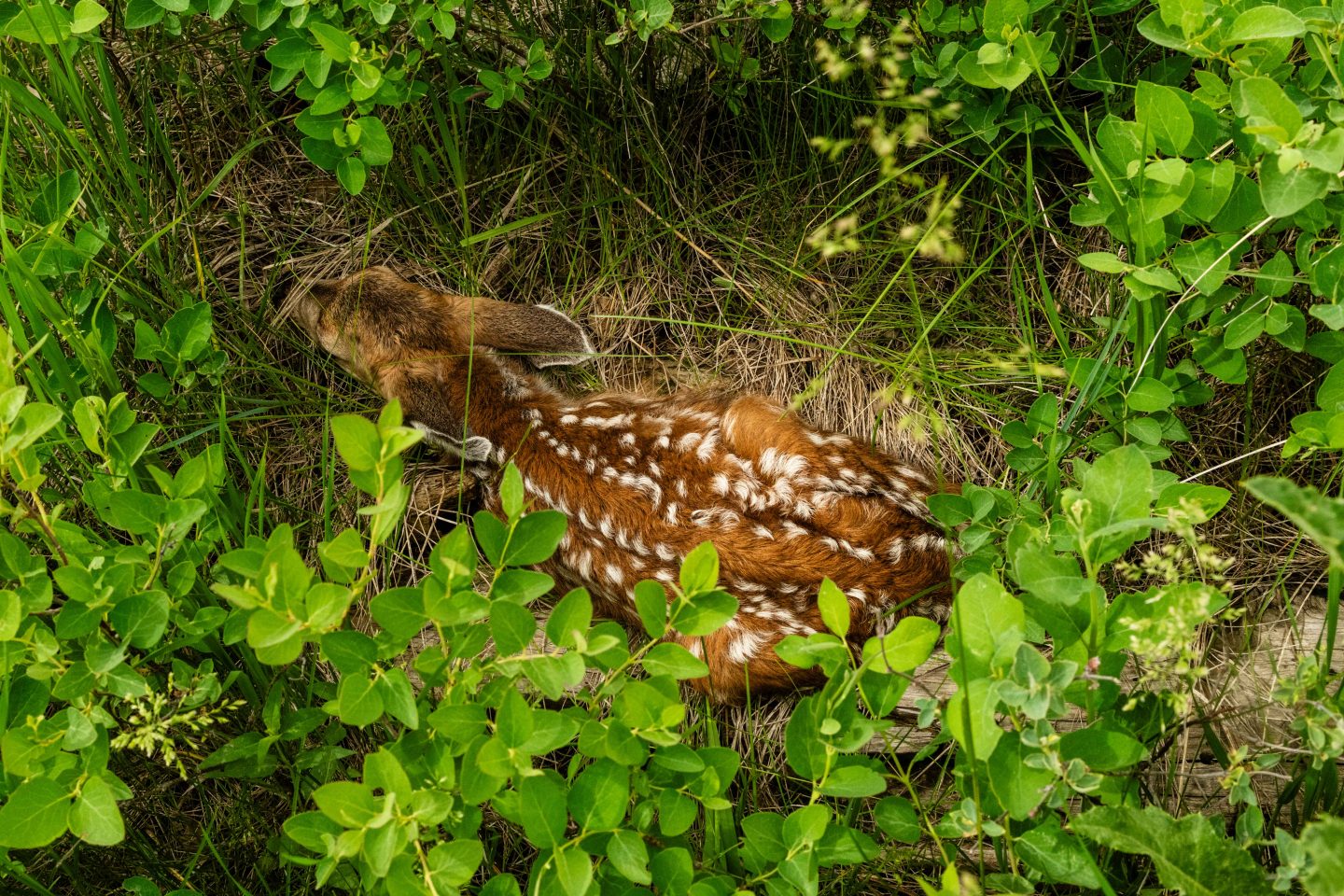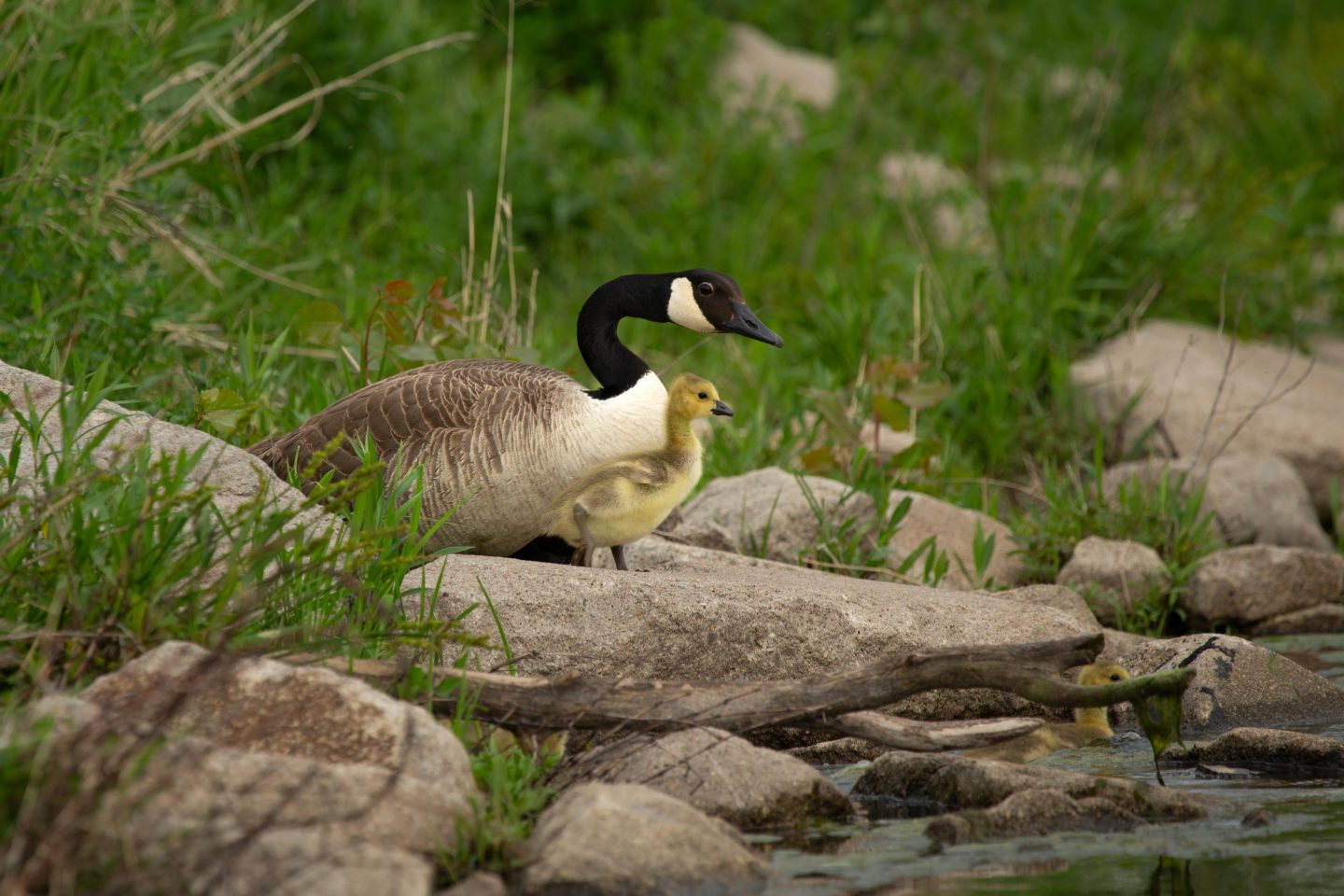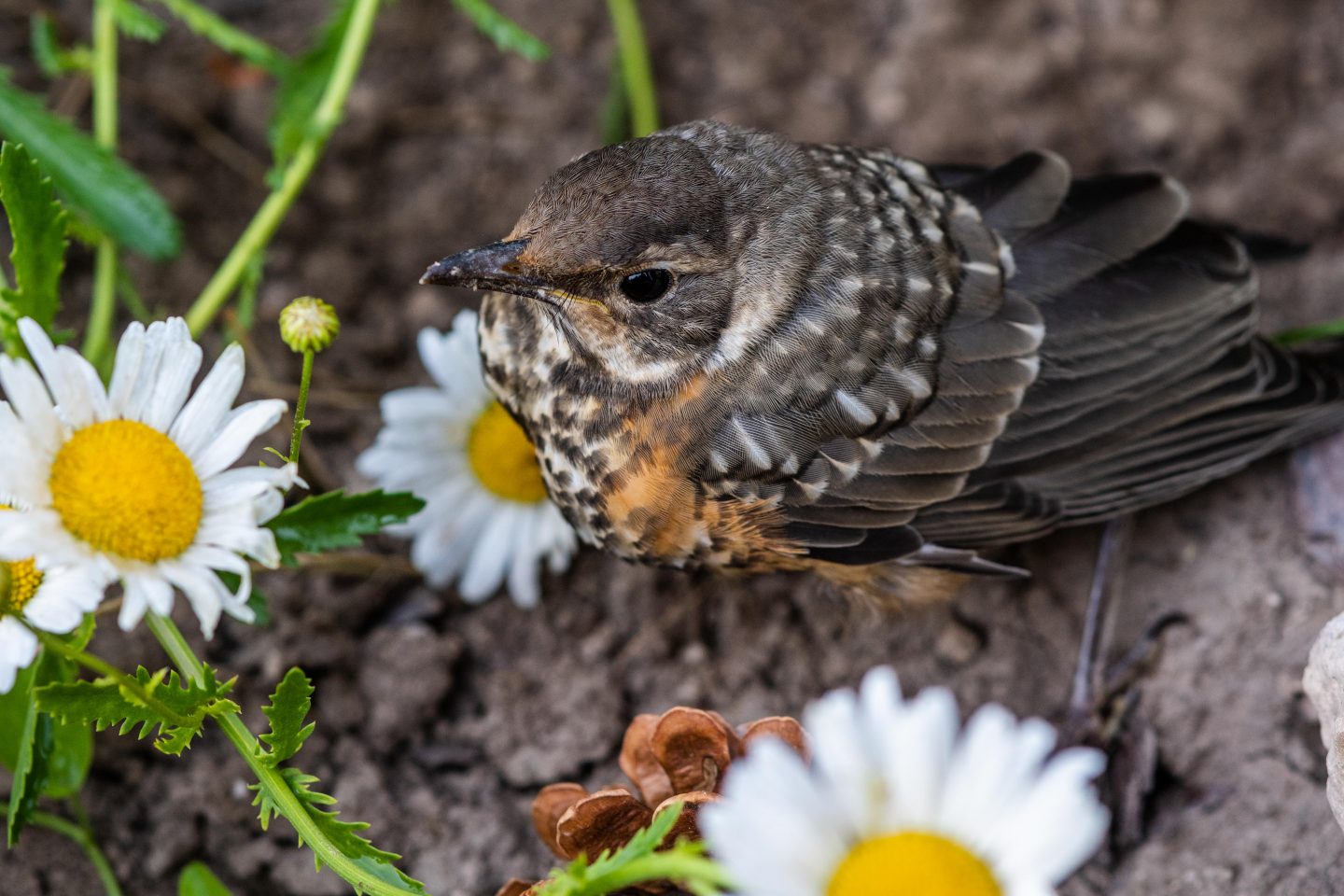
By Monica Macoubrie, Wildlife Education Specialist
As I sit down to write this article, a blizzard is raging outside my window — 55 mph wind gusts and snow blowing sideways make it hard to imagine spring and newborn wildlife. But this is Nebraska, where unpredictable weather is just a part of life, even for the animals welcoming their young into the world.
From avoiding predators to surviving harsh early spring conditions, to finding food and even competing with siblings, young wildlife in Nebraska face countless challenges. Still, despite these challenges, human intervention is rarely necessary. Here are a few things to consider when encountering young wildlife this spring.
Deer Fawns – A Delicate Beginning
Spring is baby season for many of Nebraska’s mammals, a time that gives young the best chance to grow strong through the summer and fall before the following winter. One of the most recognizable babies in the state are white-tailed deer fawns, which are born around six months after the rut, typically in late May to early June. First-year does normally give birth to a single fawn, while older does usually have twins and, occasionally, triplets. Bucks play no role in raising the young.
At birth, a fawn weighs around 6-8 pounds, and by its first winter, it will have grown to 60-70 pounds. After nursing, the mother will lead her baby, or babies, to a secluded area within her home range. If she has twins, she will separate them by about 200 feet. The doe then leaves them alone for extended periods, following this pattern for about three weeks. By this time, fawns are mature enough to keep up with their mother and can race away from real or perceived danger.
You’ve Found a Fawn – What to Do
If you’ve ever stumbled across a fawn lying perfectly still in the grass, you might’ve wondered if it was abandoned. But that stillness is a survival strategy — its spotted coat blends into the dappled sunlight, and its mother is never far away, returning only a few times a day to nurse and check in.
If you happen across a fawn, the best thing to do is immediately leave the area to avoid creating disturbances. Even if you think the fawn looks hungry, do not feed it. Young animals, especially mammals, have specific nutritional requirements, and improper feeding can make them sick or even lead to death.
Fawns are rarely abandoned. The doe will typically stay away from the area until the disturbance – you — has passed, after which she will return to find her fawn. Only if more than 24 hours have passed without the mother returning should the fawn be assessed by a wildlife rehabilitator, such as Nebraska Wildlife Rehab.
Birds – From Egg to Flight
Spring and early summer are busy times for Nebraska’s bird populations. Songbirds such as robins, chickadees and house wrens build nests and raise chicks that hatch featherless and helpless, relying entirely on their parents for food and warmth. If you’ve ever spotted a nest full of gaping beaks, you’ve witnessed just how demanding these young birds can be.
The songbird life cycle begins when a female selects a nest site, often hidden in trees, shrubs or even on buildings. After laying a clutch of eggs, she sits on them to keep them warm. Once hatched, the tiny chicks are entirely dependent on their parents, who work tirelessly to bring them insects and other food.
Over the next two to three weeks, the chicks grow rapidly, developing feathers and strengthening their wings. Eventually, they reach the fledgling stage, when they leave the nest but remain under parental supervision as they learn to fly and forage for food on their own.
Waterfowl, such as Canada geese and mallards, take a different approach. Their young are precocial, meaning they hatch with downy feathers and can walk and swim almost immediately. These ducklings and goslings follow their mothers closely, learning to find food and avoid predators. If you’ve ever seen a mother goose fiercely defending her young, you know they take parenting seriously.
Raptors, including red-tailed hawks and great horned owls, invest significant time raising their young. Their chicks stay in the nest for five to seven weeks, depending on the species, growing stronger until they are ready to fledge. Even after leaving the nest, these young birds rely on their parents for food and guidance until they’ve mastered the skills needed for survival.

You’ve Found a Baby Bird – What to Do
If you’ve spent any time outdoors, chances are you’ve come across a baby bird on the ground — one that seems unable to fly, or one you think might be lost or abandoned. Your first instinct is to probably try to help, but in most cases, they don’t actually need assistance. In fact, intervening often makes the situation worse. Here are a few guidelines to help you decide whether you should act.
First, determine if the bird is a nestling or a fledgling — most birds people find are fledglings. These are young birds that have just left the nest. They can’t fly yet but are still under the care of their parents. Fledglings are capable of hopping or flitting, and they’re usually fluffy with a tiny stub of a tail. Once they leave the nest, they rarely return, so putting them back will just make them hop out again. In most cases, there’s no need to intervene. If you do want to help, you can move the bird to a safer area and keep your pets indoors to protect it.
If the bird is sparsely feathered and can’t hop, walk or flit, it’s a nestling. The nest is most likely nearby, and if you can find it, you can place the bird back in the nest as soon as possible. Don’t worry — the parents won’t abandon the bird if you touch it, as they don’t recognize their young by smell.
If the bird is visibly injured, your best course of action is to bring it to a wildlife rehabilitator.

The early days are full of challenges for wildlife babies. While it’s tempting to step in and help, it’s often best to let these young animals be. It’s more likely they don’t need our help, and in fact, intervening can sometimes do more harm than good. Ultimately, the best way to support young wildlife is by respecting their process to learn and grow and giving them the space to develop on their own terms.
However, if you do find an injured or orphaned animal, don’t hesitate to reach out to a wildlife rehabilitator.
